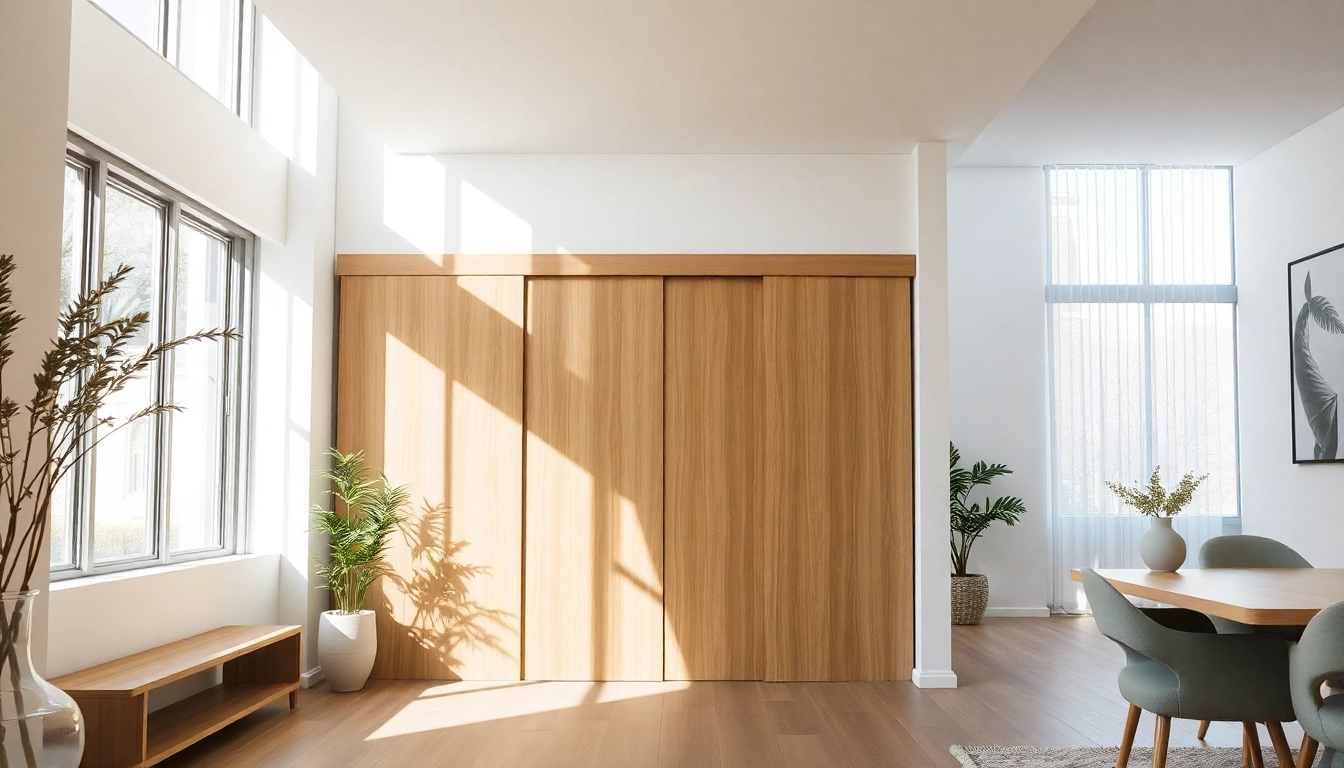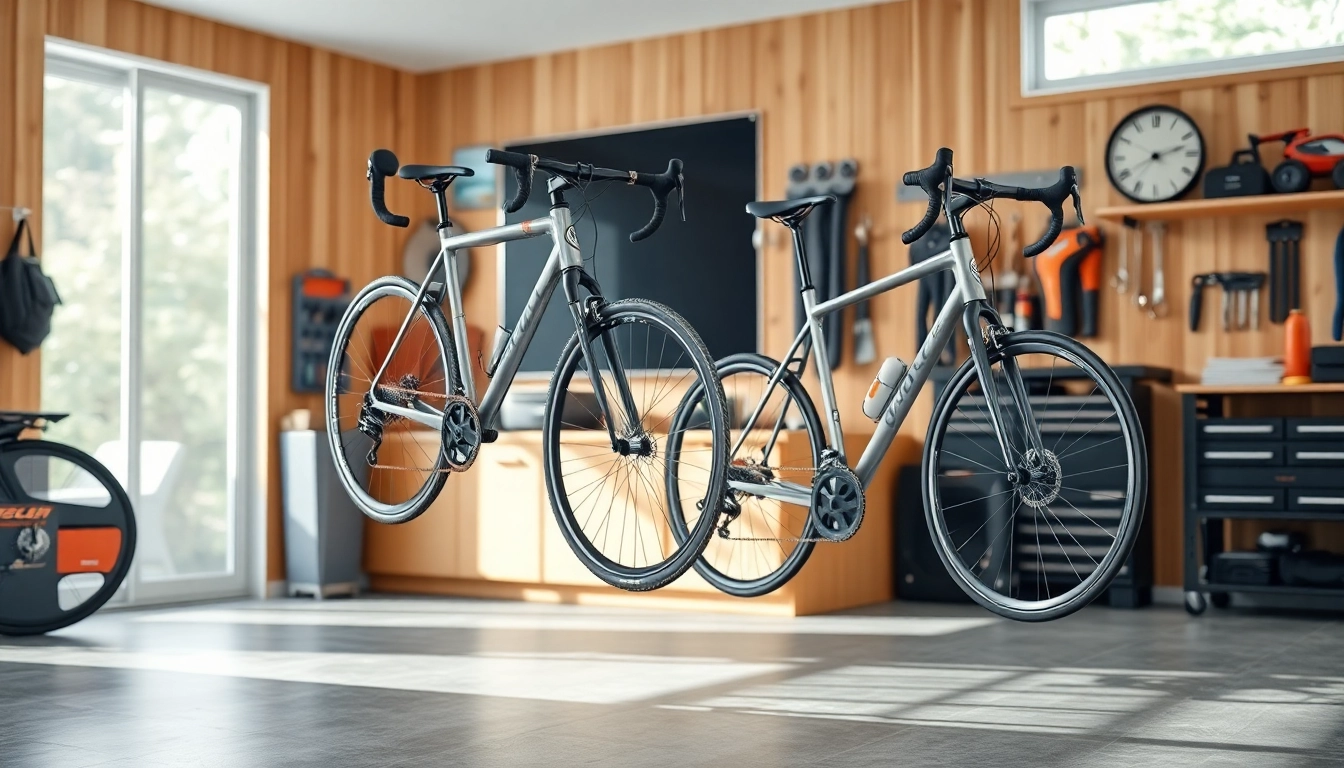Understanding Sliding Partition Walls
What is a Sliding Partition Wall?
A sliding partition wall is a movable wall system designed to create flexible spaces in various environments, from residential homes to commercial offices. Unlike traditional fixed walls, sliding partition walls can be retracted or extended to adapt the size and function of a space. This innovative solution promotes versatility in interior design and can significantly enhance the usability of large areas. These walls typically operate on a track system, allowing them to glide smoothly, providing privacy or openness as required.
Benefits of Using Sliding Partition Walls
One of the primary benefits of a sliding partition wall is its ability to create multifaceted spaces without significant structural changes. Here are some key advantages:
- Space Optimization: Sliding partitions can efficiently divide a large area into smaller, functional spaces, making them perfect for offices, conference rooms, and open-concept homes.
- Adaptability: They allow for quick reconfiguration of spaces. You can adjust the layout according to changing needs—whether it’s for a meeting, a social gathering, or personal privacy.
- Enhanced Aesthetics: Available in various materials and designs, sliding partition walls can improve the visual appeal of your interiors while offering modern, clean lines.
- Cost-Effectiveness: In many cases, they can be an economical solution compared to complete renovations or major construction.
Common Applications in Homes and Offices
Sliding partition walls are increasingly popular across various applications. Here are some common uses:
- Residential: Homeowners can use sliding partitions to separate living areas, transform guest rooms, or create flexible spaces for family activities.
- Commercial: In offices, sliding partitions help define workspaces, facilitate meetings, and create private areas for staff, while still maintaining an open environment.
- Event Venues: These walls can assist in modifying areas for different events, providing the flexibility to accommodate varying numbers of attendees and purposes.
- Educational Institutions: Schools and universities can benefit from sliding partitions to create versatile classrooms that can adapt to different teaching styles and activities.
Types of Sliding Partition Walls
Wall-Mounted vs. Ceiling-Mounted Systems
Sliding partition walls can be classified based on their mounting systems. The two primary types are wall-mounted and ceiling-mounted systems. Each has its advantages and applications:
Wall-Mounted Systems
Wall-mounted sliding partitions attach directly to the wall. They are often less complex to install and provide a seamless look that aligns with the existing wall finishes.
Ceiling-Mounted Systems
These systems utilize tracks installed on the ceiling, allowing the walls to slide open or closed without obstruction at the floor. This design is particularly beneficial in office spaces where flooring type varies, as it eliminates potential trip hazards associated with floor tracks.
Differentiating Materials: Wood, Glass, and More
Another significant aspect of sliding partition walls is the variety of materials used in their construction. The choice of material affects both functionality and aesthetics. The most common materials include:
- Wood: Offers a warm, classic look that can be easily customized with finishes. Typically used in residential settings, wood sliding partitions can provide sound insulation as well.
- Glass: Ideal for modern environments, glass sliding partitions allow light to flow between spaces while maintaining a sense of separation. They can also be treated for privacy.
- Fabric: Lightweight and available in numerous colors and patterns, fabric partition walls are often used in temporary setups.
- Metal: Often utilized for commercial applications due to its durability, metal partitions offer a sleek, industrial look.
Cost Considerations for Various Options
When considering sliding partition walls, it’s essential to evaluate the costs associated with different types, materials, and installation requirements. Factors influencing costs include:
- Materials: Glass and custom wood options tend to be more expensive than standard fabric or panel systems.
- Installation: Professional installation can add significantly to the total cost, especially for ceiling-mounted systems.
- Customization: Custom designs or unique finishes will increase the overall budget.
Installation Guide for Sliding Partition Walls
Pre-Installation Considerations
Before installing a sliding partition wall, several factors must be assessed to ensure a successful installation:
- Space Measurements: Careful measurement of the area will help determine the correct size and type of partition needed.
- Ceiling Height: Ensure the chosen system accommodates your ceiling height—especially for ceiling-mounted tracks.
- Wall Structure: Verify whether the wall can support a mounted system if you opt for wall-mounted models.
Step-by-Step Installation Process
Here’s a general step-by-step guide to installing a sliding partition wall:
- Gather Materials: Ensure you have all necessaries such as track, panels, brackets, and tools.
- Mark Track Position: Using a level, mark the position where the track will be installed. For ceiling-mounted systems, ensure the marks align with the ceiling joists.
- Install the Track: Attach the track to the wall or ceiling following manufacturer instructions.
- Attach Panels: Lift the panels into the track and ensure they glide smoothly.
- Test Functionality: Open and close the partition several times to ensure it operates correctly. Adjust if necessary.
- Finishing Touches: Add any trim or customization to enhance the appearance.
Common Mistakes to Avoid
Here are some common pitfalls to avoid during installation:
- Inaccurate Measurements: Double-check measurements to avoid purchasing the wrong size.
- Ineffective Track Installation: Ensure tracks are secure and level for optimal operation.
- Neglecting Weight Capacity: Consider weight limits for both the wall and tracks to prevent sagging.
Design Ideas with Sliding Partition Walls
Creating Open Spaces that Flow
One of the main advantages of sliding partition walls is their ability to create and maintain open spaces that can easily transition between different configurations. Here are design tips:
- Open Plan Living: Use transparent glass panels for partitions to maintain an airy feel while providing privacy when closed.
- Flexible Workspaces: Employ wood or fabric walls to easily transform a boardroom into multiple individual workspaces as needed.
Innovative Styles to Match Your Decor
Sliding partition walls come in various styles to complement your existing decor:
- Modern Aesthetic: Opt for sleek glass designs with minimalistic frames to fit contemporary spaces.
- Rustic Charm: Barn door-style sliding panels can add a rustic touch, enhancing cozy, warm interiors.
Using Color and Texture to Enhance Aesthetics
The choice of color and texture can significantly influence the appearance and feel of a space. Consider these ideas:
- Color Coordination: Choose colors that complement or contrast with your existing decor to make the partition a focal point.
- Textured Surfaces: Incorporate panels with varied textures to add depth and interest to your interiors.
Maintaining Your Sliding Partition Wall
Cleaning and Care Tips
Regular maintenance is crucial to keep sliding partition walls in good working condition:
- Dust Regularly: Use a soft cloth to dust panels and tracks to avoid undue strain on the sliding mechanism.
- Handle with Care: Ensure users are educated on smooth operations to minimize wear and tear.
When to Repair or Replace
Knowing when to repair or replace your sliding partition wall can save you money and hassle:
- Hardware Wear: If tracks or rollers are worn and cause difficulty in movement, it may be time to consider replacements.
- Panel Damage: Cracks, warps, or broken sections often necessitate replacement panels to maintain the wall’s integrity.
Maximizing Longevity Through Care
Incorporating care strategies can increase the lifespan of your sliding partition wall:
- Lubrication: Regularly lubricate tracks and rollers with appropriate products to ensure smooth operation.
- Seasonal Inspections: Inspect the wall for any signs of damage or wear at least twice a year and address issues promptly.



